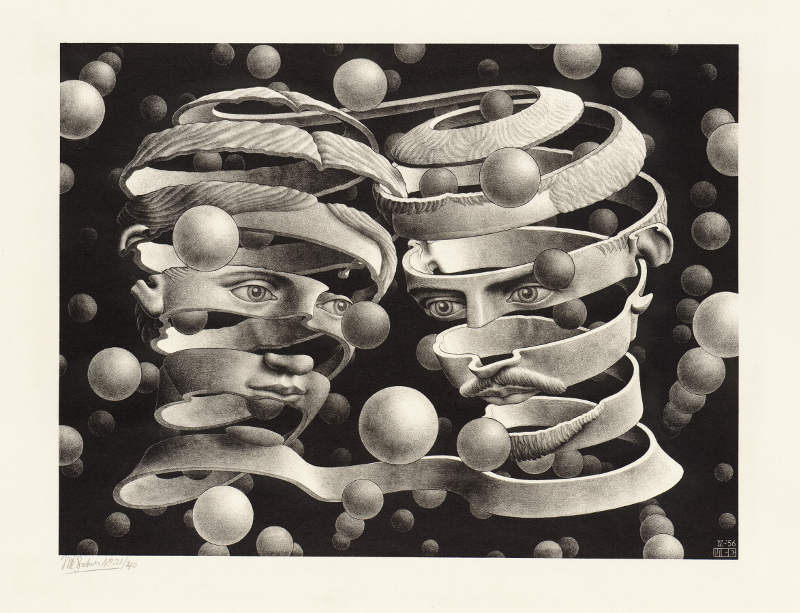Director – Robin Lutz – 2018 – The Netherlands – Cert. PG – 81m
*****
The life and work of graphic artist M.C. Escher is explored through his own images and words (read by Stephen Fry) – on UK/Ireland digital download platforms from Monday, October 18th – iTunes, Amazon, Sky Store, Curzon Home Cinema, Google and Microsoft
Maurits Cornelius Escher’s words at the start of this film suggest a production doomed to fail: “I am afraid there is only one person in the world who could make a good film about my prints: me.” Sadly, since Escher passed away in 1972, we will never see that film. Happily, Robin Lutz has proved Escher wrong by making this one. And so too has his collaborator Stephen Fry whose voice-over for the English language version, recorded in under three hours at a London dubbing studio, is nothing short of inspired (of which more later). He must have done some serious preparation beforehand.
For the uninitiated, Escher (1898-1972) is the Dutch graphic artist whose prints famously include Ascending and Descending (March 1960), the impossible staircase which keeps going up and up, or down and down for people travelling in the opposite direction – as it goes round and round in a square. The concept was first developed by psychiatrist / mathematician Lionel Penrose and his mathematician son Roger Penrose, the latter credited as patron on the film. The concept featured in Inception (Christopher Nolan, 2010), the clip of which is included.

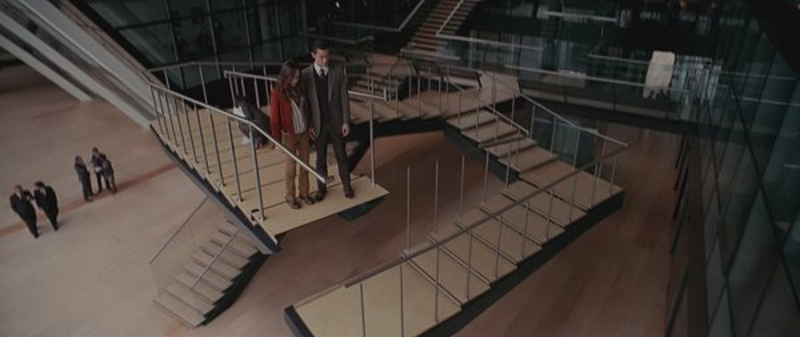
Day and Night (February 1938) features black ducks and white ducks flying in opposite directions into daylight or darkness above fields. As your eye moves up the picture, the fields slowly morph into ducks. The shapes between the black ducks on one side of the picture become the white ducks on the other side in a beautiful symmetry.
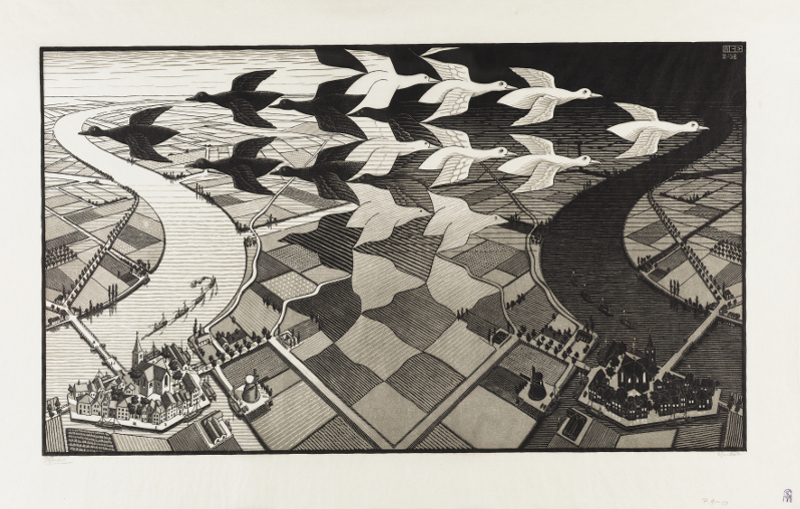
Such visual conceits are the stuff of Escher’s most celebrated works. Others deploy patterns where gaps between repeating motifs turn into opposing motifs vying for your attention. In the late 1960s, he was baffled and shocked to discover psychedelic colour posters of his black and white work coming out of the hippie culture in San Francisco. When musician Graham Nash (of Crosby, Stills and Nash) phoned Escher to tell him he thought him a great artist, back came the indignant reply, “I’m not an artist – I’m a mathematician!”
Escher was training to be an architect when a college tutor redirected him into printmaking, changing the course of his life. A later trip to Tuscany, where he was awed by the blue sky framed by dark cypress trees, yielded not only drawings of both one inch plant details and buildings perched atop rock faces but also an encounter with the 24-year-old woman who would become his wife. Fearing their boys were falling under the spell of the ascendant fascist Mussolini a decade or so later, the Eschers left for Switzerland which Maurits hated, describing it as “white, snowy misery”.
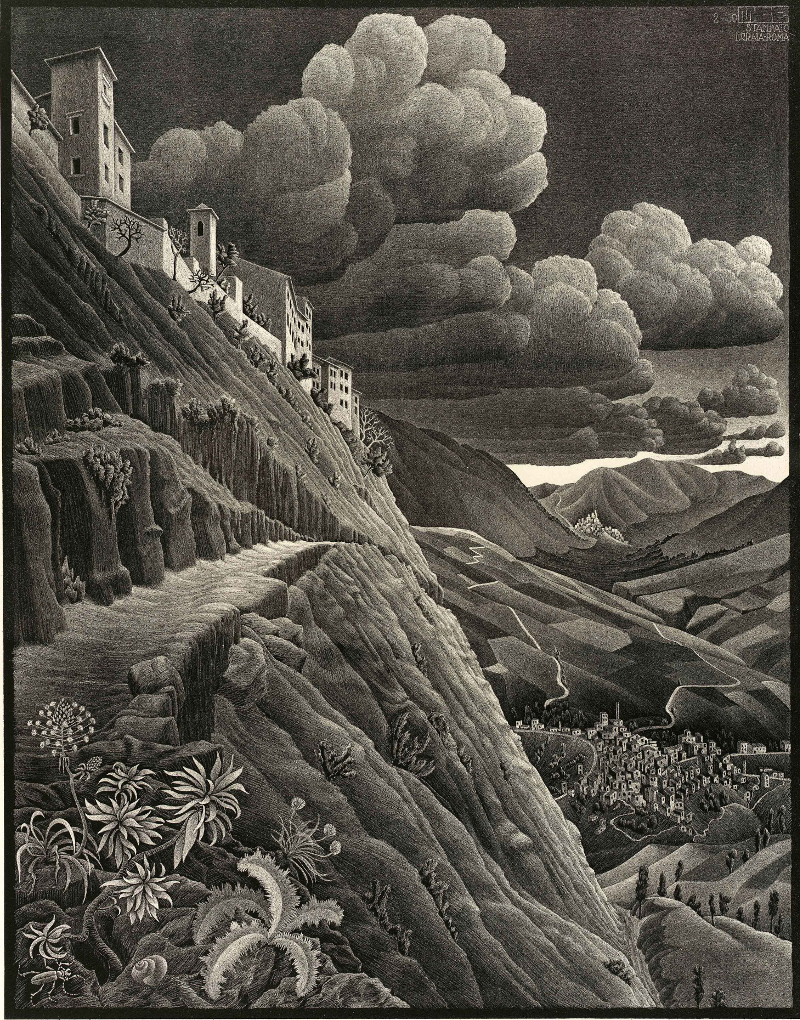
He pitched a sea voyage at a shipping company to València and back to be paid for by 12 prints promoting the trip and to his surprise was accepted. The voyage included three weeks in Spain and a trip to the Alhambra in Granada, where he fell under the spell of the mosaics with their patterns based on repeating forms even as he lamented the lack of recognisable, figurative content to those forms – something he would develop in subsequent print work.
Returning to the hated Switzerland then moving to Belgium, Escher was horrified when the Nazis took away his old college tutor who was Jewish. He subsequently rescued 200 prints from his mentor’s studio, one of which was was stamped with a dirty, jackboot footprint. Meanwhile, his artistic output ground to a halt as he put all his energies into keeping his family safe. However, his wife’s mental health suffered.
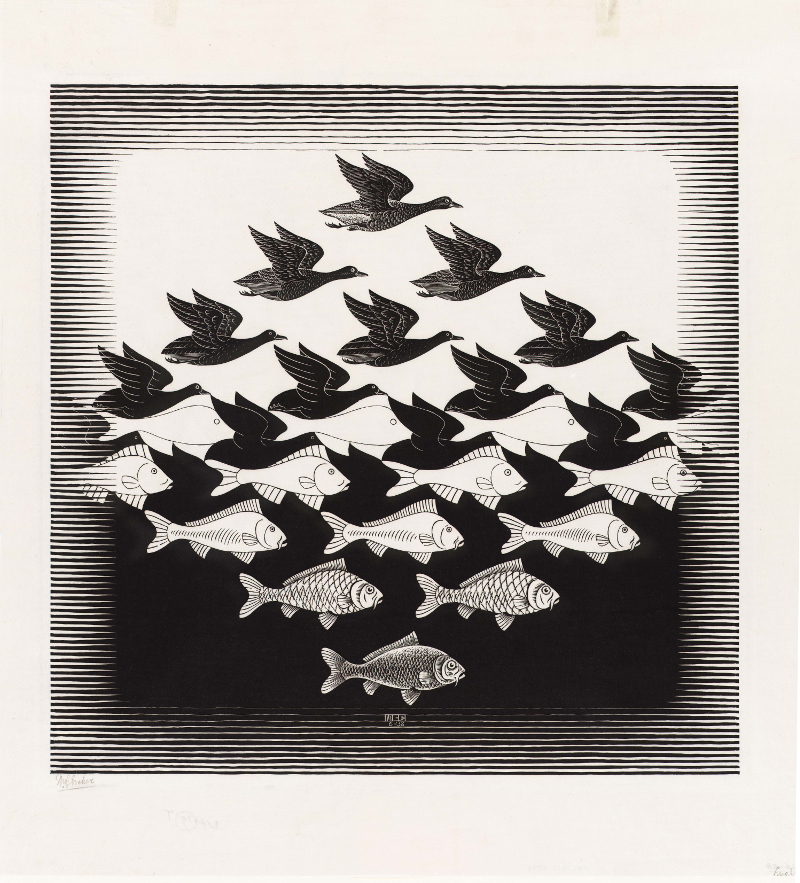
The externally observed Italian landscapes of his previous works were replaced by something inside him that had to come out. His brother told him he was unknowingly applying a type of crystallography to his prints, although Maurits saw it as being closer to “an endlessness within a three dimensional plane.” This is when the pattern-based images for which he is widely known began to appear.
His lengthy panorama Metamorphosis (November 1939 to March 1940) starts with interlocking patterns, which at one point turn from squares to hexagons via a pattern of interlocking lizards as the viewer’s eye moves from left to right. As such, it relates to the art of animation, and the film astutely animates the lizard crawling over the first section of the picture. Perhaps surprisingly, Escher is on record as praising Disney’s talent even as he suggests that animation is capable of more important thoughts than Mickey or Snow White.
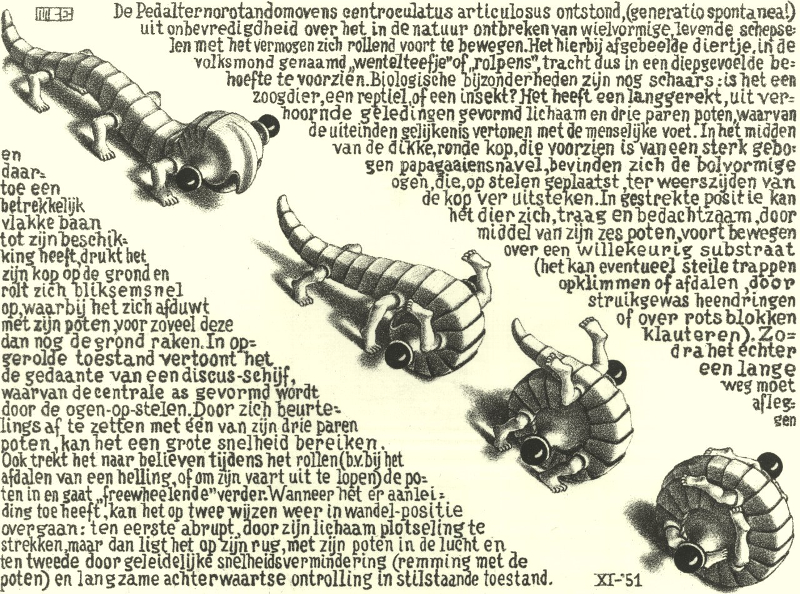
One wonders exactly what an Escher animation might have looked like (he never dabbled in it), but this film employs that medium on various occasions, most notably in bringing life to the Curl-up, the creature he drew that could curl up to utilise the properties of the wheel, a spectacular omission by God in the process of creation, he felt.
While the form of the film brilliantly captures the sense of wonder, magic and optimism of Escher’s prints, as if all this wasn’t enough, director Lutz has another ace up his sleeve in the from of a magnificent voice-over by actor Stephen Fry who reads extracts (translated into English form the original Dutch) from Escher’s writings with a dour, no-nonsense tone that while expanding his thinking before our ears also hilariously shows him up as a pessimist and all-round miserable so-and-so, a personality seemingly at odds with the optimistic spirit of his prints.
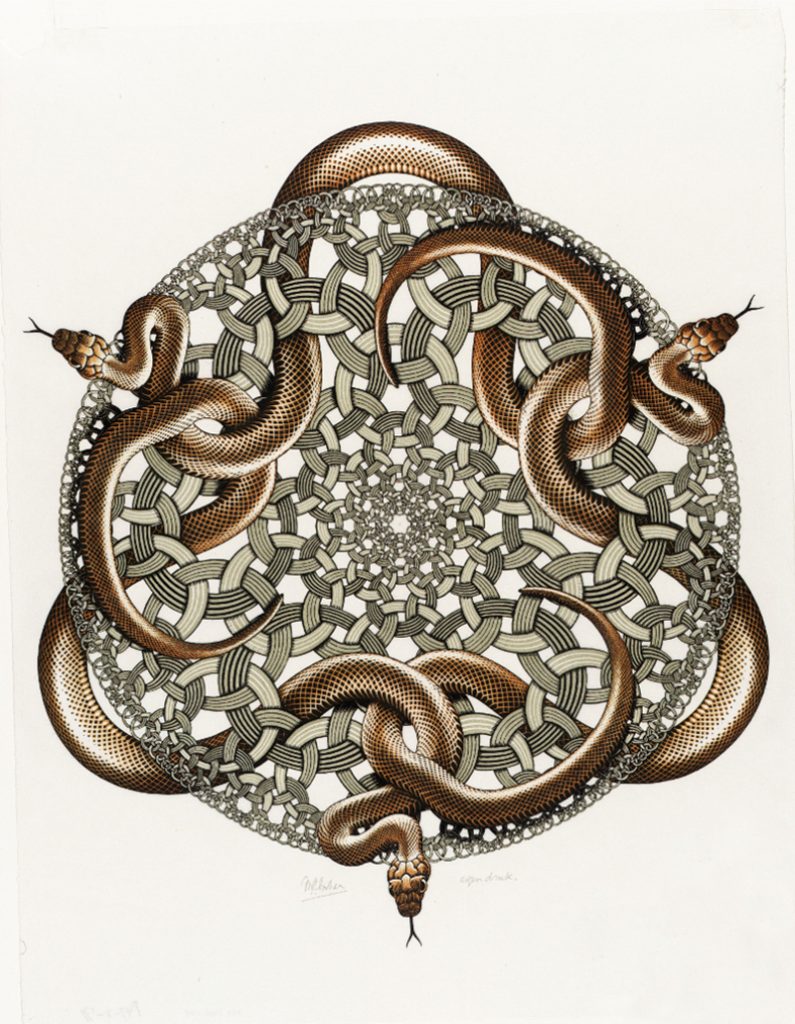
This allows the film to be described as a comedy – I certainly laughed out loud quite a few times and warmed to the whole thing even more than I had expected to. Not that this voice-over short changes Escher’s extraordinary talent in any way.
Informative interviews are conducted with two of his sons and a daughter-in-law (in Dutch with English subtitles) and the aforementioned Graham Nash (in English) plus a plethora of archive stills and moving images, including footage of Escher at work on his late print Snakes (July 1969). As a fan of his work, I was hoping for an informative documentary with lots of material to satisfy my inner Escher geek. The film delivered all that and more, far exceeding whatever expectations I could possibly have had of it. An absolute must-see.
Escher: Journey Into Infinity is on UK/Ireland digital download platforms from Monday, October 18th – iTunes, Amazon, Sky Store, Curzon Home Cinema, Google and Microsoft.
Trailer:
UK release
2021
Monday, October 18th: UK/Ireland digital download platforms – iTunes, Amazon, Sky Store, Curzon Home Cinema, Google and Microsoft
Friday, August 13th: cinemas
All M.C. Escher works © The M.C. Escher Company B.V. -Baarn-Holland. All rights reserved. www.mcescher.com
